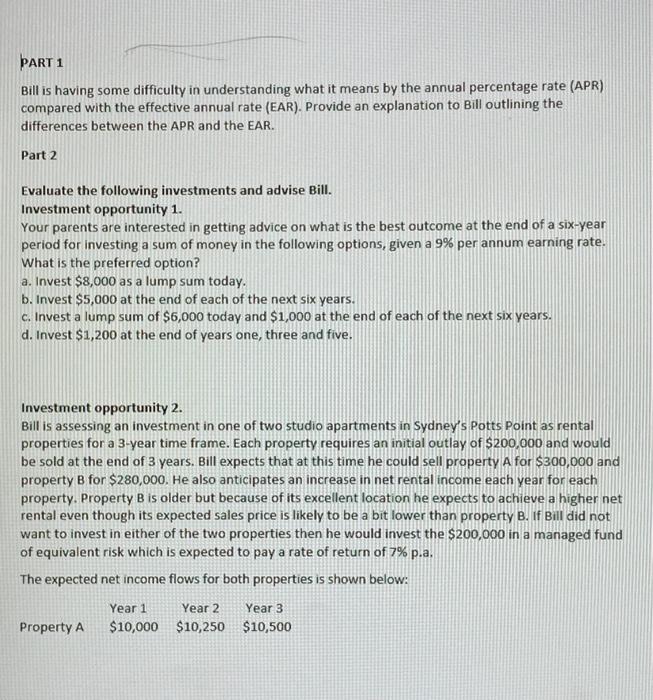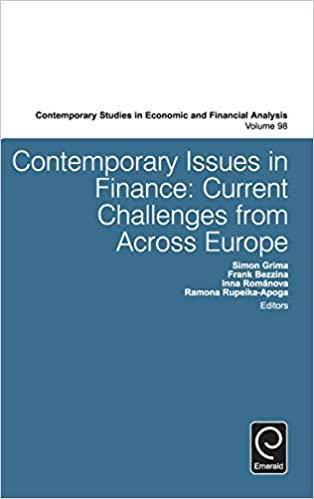PART 1 Bill is having some difficulty in understanding what it means by the annual percentage rate (APR) compared with the effective annual rate (EAR). Provide an explanation to Bill outlining the differences between the APR and the EAR. Part 2 Evaluate the following investments and advise Bill. Investment opportunity 1. Your parents are interested in getting advice on what is the best outcome at the end of a six-year period for investing a sum of money in the following options, given a 9% per annum earning rate. What is the preferred option? a. Invest $8,000 as a lump sum today. b. Invest $5,000 at the end of each of the next six years. c. Invest a lump sum of $6,000 today and $1,000 at the end of each of the next six years. d. Invest $1,200 at the end of years one, three and five. Investment opportunity 2. Bill is assessing an investment in one of two studio apartments in Sydney's Potts Point as rental properties for a 3-year time frame. Each property requires an initial outlay of $200,000 and would be sold at the end of 3 years. Bill expects that at this time he could sell property A for $300,000 and property B for $280,000. He also anticipates an increase in net rental income each year for each property. Property B is older but because of its excellent location he expects to achieve a higher net rental even though its expected sales price is likely to be a bit lower than property B. If Bill did not want to invest in either of the two properties then he would invest the $200,000 in a managed fund of equivalent risk which is expected to pay a rate of return of 7% p.a. The expected net income flows for both properties is shown below: Year 1 $10,000 Year 2 Year 3 $10,250 $10,500 Property A Investment opportunity 3. Bill would like advice on investing in a $70,000 2-year 'snowball' fixed deposit providing an interest rate of 5% p.a. with interest paid half-yearly. The interest paid is reinvested back into the fixed deposit which is the basis for the 'snowball' description. On maturity, the investment provides a bonus interest amount of $500 for all investments that have a balance at maturity that exceeds their initial investment by more than 10%. Bill is subject to a 40% effective tax rate for interest income derived in the first year and 30% for the second year. Bill has sought your assistance in determining whether he would be eligible for the interest bonus and also to calculate his total after-tax net income from the investment








